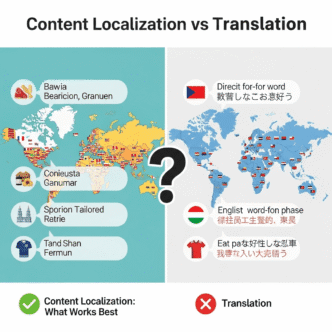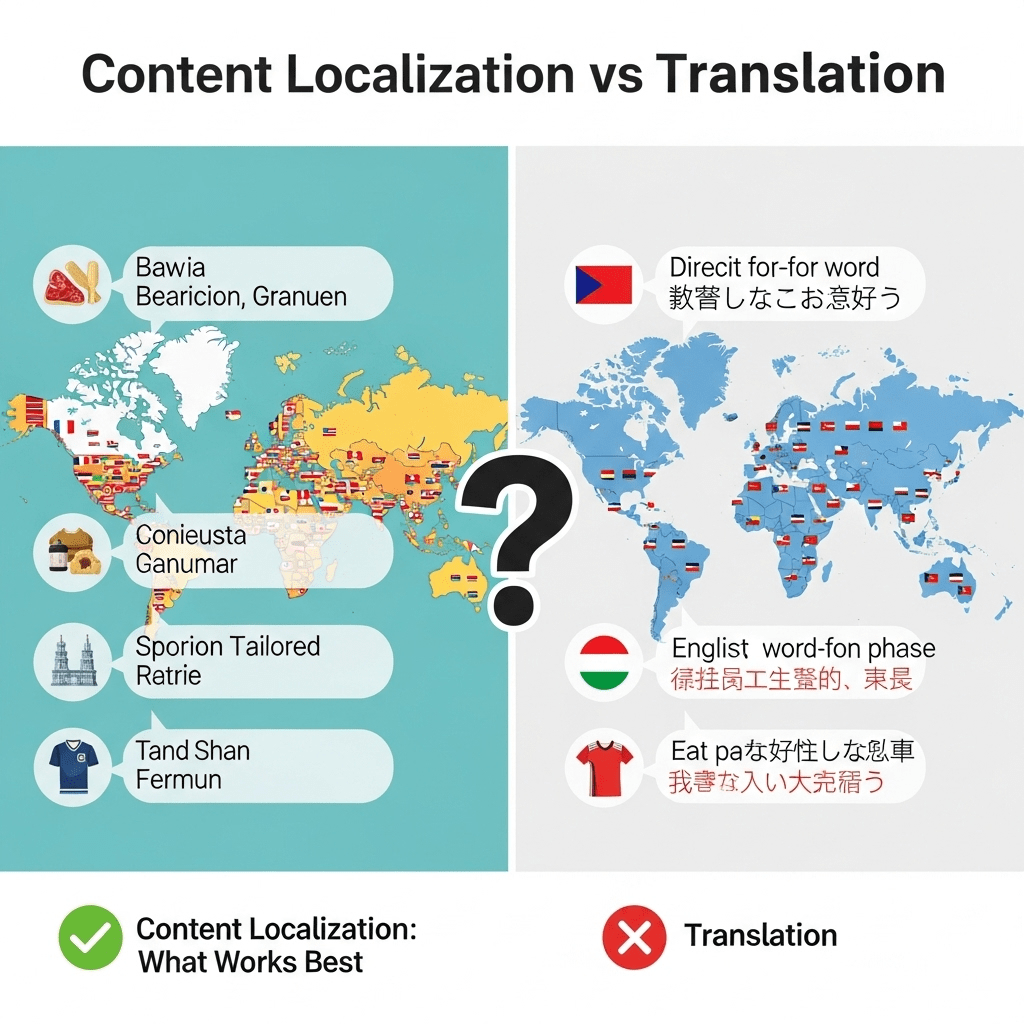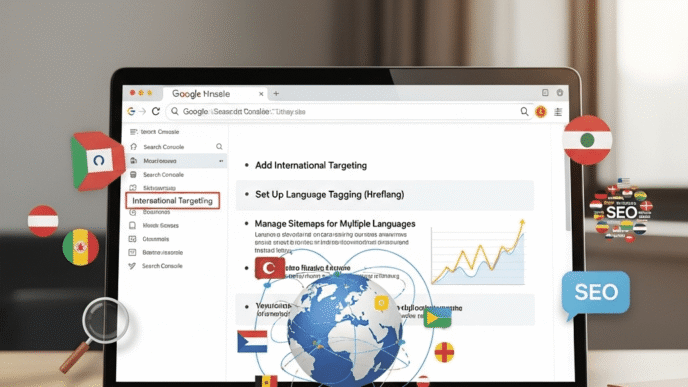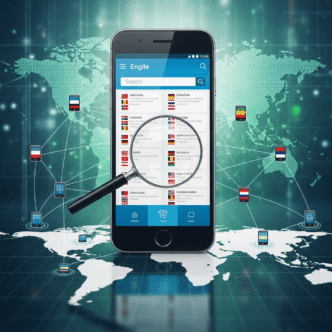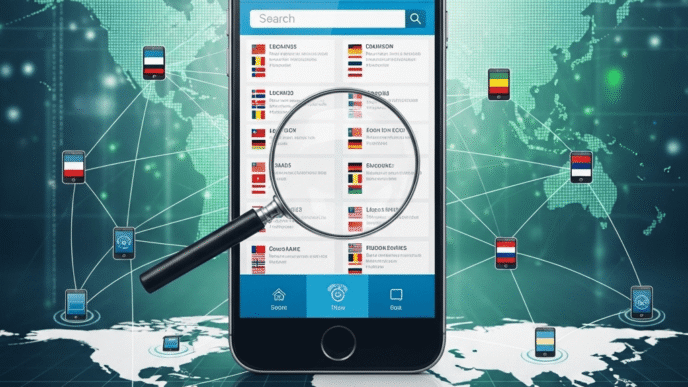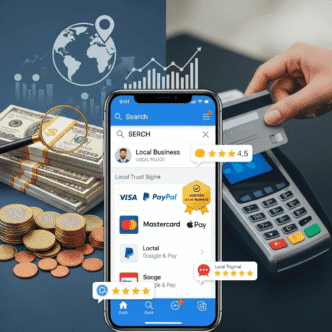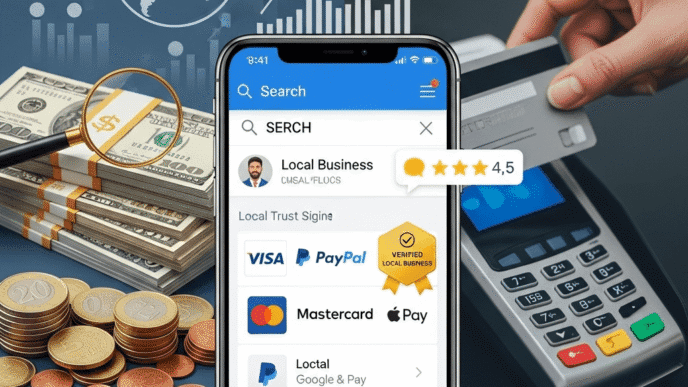You’ve just launched your Spanish website. The translation is perfect—every word technically correct, every sentence grammatically flawless. Three months later, your traffic is embarrassingly low, bounce rates are through the roof, and nobody’s converting.
What went wrong?
Here’s the brutal truth: you translated your content, but you didn’t localize it. And in international SEO, that difference between translation and localization isn’t just semantics—it’s the difference between success and expensive failure.
Content localization goes far beyond swapping English words for Spanish ones. It’s about adapting your message to resonate with local culture, search behavior, preferences, and expectations. It’s the reason KFC thrives in China while maintaining “finger lickin’ good” in the US (with completely different menus and messaging).
I’ve watched companies waste six figures on “perfect” translations that nobody reads. Meanwhile, their competitors—who invested in true localization—are dominating search results and converting like crazy.
In this guide, I’ll show you exactly what separates translation from localization, when you need each approach, and how to localize content for international markets in ways that actually drive results.
Let’s stop wasting money on content that technically works but practically fails.
Table of Contents
ToggleWhat’s the Real Difference Between Translation and Localization?
Most people think these terms are interchangeable. They’re not even close.
Understanding Translation
Translation is the straightforward conversion of text from one language to another while maintaining the original meaning.
Think of it like this: you have a sentence in English, and you swap each word for its equivalent in French. The message stays the same, the structure stays similar, and the goal is accuracy and clarity.
What translation does:
- Converts words from source to target language
- Maintains grammatical accuracy
- Preserves the original message and intent
- Focuses on linguistic correctness
What translation doesn’t do:
- Adapt to cultural nuances
- Consider local search behavior
- Adjust for regional preferences
- Account for market-specific context
Understanding Content Localization
Content localization is the comprehensive adaptation of content to fit a specific market’s linguistic, cultural, and functional requirements.
It takes translation as a starting point, then asks: “How do we make this resonate with people in this specific market?”
What localization includes:
- Accurate translation (as the foundation)
- Cultural adaptation of examples and references
- Local currency, measurements, and formats
- Region-appropriate imagery and colors
- Adjusted tone and messaging for local preferences
- Keywords based on local search behavior
- Legal and regulatory compliance
Think of translation as the skeleton and localization as the complete body—muscle, skin, personality, and all.
According to research from Common Sense Advisory, 75% of consumers prefer to buy products in their native language, and 60% rarely or never buy from English-only websites. But here’s the kicker: it’s not just about language—it’s about feeling like the content was created specifically for them.
Pro Tip: If your localized content reads like it was originally written in the target language (not translated from English), you’ve nailed it. If readers can tell it’s translated, you need better localization.
Why Does Content Localization Matter More for SEO?
You might be thinking: “If Google can translate pages instantly, why do I need localization?” Great question. Here’s why.
Search Behavior Differs Across Markets
People in different countries don’t just use different languages—they search differently, think differently, and expect different things from content.
Real example:
Americans searching for sneakers might type: “best running shoes 2025
Germans would search: “Laufschuhe Test 2025” (running shoes test 2025)
French users prefer: “chaussures running avis” (running shoes reviews)
Notice the difference? Germans emphasize “test” (they value independent testing), French users focus on “avis” (reviews/opinions), and Americans want “best” (superlatives and rankings).
A simple translation wouldn’t capture these nuances. Content localization adapts to these search behavior patterns.
Cultural Relevance Impacts Engagement Metrics
Google tracks user engagement signals—bounce rate, time on page, click-through rate. When content feels foreign or irrelevant, these metrics tank, and so do your rankings.
Examples of cultural disconnects:
Using American football analogies in Europe: Europeans don’t follow American football. Your clever “Hail Mary” reference means nothing and creates confusion.
Showing snow imagery for Australian summer: When it’s December and scorching hot in Sydney, winter holiday imagery feels bizarre.
Referencing Thanksgiving in Japan: They don’t celebrate it. Content built around this holiday feels disconnected and irrelevant.
These cultural mismatches increase bounce rates and decrease engagement—direct ranking factors Google cares about.
Local Competition Understands the Market Better
Your local competitors aren’t translating—they’re creating native content that resonates from the ground up. They understand local pain points, use local references, and speak like actual humans in that market.
If you’re just translating while they’re truly localizing, you’re bringing a knife to a gunfight.
For comprehensive strategies on international content optimization, check this international SEO guide.
What Are the Key Elements of Effective Content Localization?
Let’s break down what cultural adaptation actually looks like in practice.
Language and Linguistic Adaptation
This goes beyond basic translation to consider how people actually speak.
Formal vs. informal language:
- Germans generally prefer formal business communication
- Australians favor casual, relaxed tone even in business
- Spanish varies dramatically (formal in Spain, more casual in Latin America)
Regional vocabulary differences:
- “Lift” (UK) vs. “elevator” (US)
- “Mobile” (UK) vs. “cell phone” (US)
- “Football” means different sports in US vs. Europe
Idiomatic expressions: Don’t translate idioms literally. “It’s raining cats and dogs” doesn’t work in most languages. Find equivalent local expressions or rewrite clearly.
Cultural Customization and Context
Adapt content to local cultural norms, values, and expectations.
Color symbolism:
- White represents purity in Western cultures, mourning in some Asian cultures
- Red means luck in China, danger in Western contexts
- Green has religious significance in Islamic countries
Imagery and photography:
- Use models that represent your target demographic
- Show culturally appropriate clothing and settings
- Avoid gestures that are offensive in certain cultures (thumbs up is rude in parts of Middle East)
Examples and case studies: Replace American company examples with local or regional examples that your audience actually knows.
Holidays and seasonal references:
- Christmas isn’t celebrated everywhere
- Chinese New Year matters more than January 1 in many Asian markets
- Ramadan is crucial timing for Middle Eastern markets
Format and Technical Localization
These technical details massively impact user experience.
Date formats:
- US: MM/DD/YYYY (03/15/2025)
- Most of Europe: DD/MM/YYYY (15/03/2025)
- Japan: YYYY/MM/DD (2025/03/15)
Time formats:
- 12-hour (2:30 PM) common in US, UK, Australia
- 24-hour (14:30) standard in most of Europe, military worldwide
Number formats:
- US: 1,234.56 (comma thousands, period decimal)
- Europe: 1.234,56 (period thousands, comma decimal)
- Some countries: 1 234,56 (space thousands, comma decimal)
Currency:
- Symbol placement varies: $100 (US), 100€ (France), £100 (UK)
- Always show prices in local currency
- Consider local payment method preferences
Measurement systems:
- Metric system (most of world) vs. Imperial (US, parts of UK)
- Temperature: Celsius vs. Fahrenheit
- Distance: kilometers vs. miles
Phone numbers:
- Format according to local conventions
- Include proper country codes
- Make them clickable with tel: links
Legal and Regulatory Compliance
Different markets have different legal requirements for content.
GDPR compliance (Europe):
- Cookie consent banners
- Privacy policy requirements
- Data handling transparency
Accessibility requirements:
- Stricter in EU and US
- Required alt text, proper heading structure
- Keyboard navigation support
Disclaimers and disclosures:
- Health claims regulated differently by country
- Financial advice requires specific disclaimers
- Age restrictions vary (alcohol, gambling)
Pro Tip: Work with local legal experts when entering new markets. A perfectly localized site can still get shut down for regulatory violations. Don’t learn this the hard way.
How Does Translation vs Localization Impact SEO Performance?
Let’s look at the concrete SEO differences between these approaches.
Comparison Table: Translation vs Localization for SEO
| Factor | Translation Only | Full Localization | SEO Impact |
|---|---|---|---|
| Keyword targeting | Direct keyword translation | Local keyword research | Localization: 3-5x better rankings |
| Search intent match | Assumes universal intent | Adapts to local search behavior | Localization: 40% higher CTR |
| User engagement | High bounce rates common | Natural engagement | Localization: 60% better time on page |
| Conversion rates | 0.5-1.5% typical | 2-4% typical | Localization: 2-3x more conversions |
| Link building potential | Limited (feels foreign) | Strong (resonates locally) | Localization: 4x more natural backlinks |
| Brand perception | “Foreign company” | “Local presence” | Localization: 50% higher trust scores |
| Content quality signals | Google sees translation patterns | Google sees original content | Localization: Better quality scores |
| Cost | $0.08-0.15 per word | $0.15-0.30 per word | Localization: 2x ROI despite higher cost |
| Time investment | 1-2 weeks typical | 3-6 weeks typical | Localization: Worth the extra time |
Real Performance Data
A 2024 study by Nimdzi analyzed 500 international websites and found:
Sites using translation only:
- Average bounce rate: 67%
- Average time on page: 45 seconds
- Conversion rate: 1.2%
- International revenue: 18% of total
Sites using full localization:
- Average bounce rate: 41%
- Average time on page: 2 minutes 15 seconds
- Conversion rate: 3.1%
- International revenue: 37% of total
The numbers don’t lie. Content localization delivers measurably better results.
What’s Transcreation and When Do You Need It?
Here’s where things get really interesting. There’s actually a third level beyond localization: transcreation.
Understanding Transcreation
Transcreation is the creative adaptation of content where the translator has freedom to completely rewrite copy to achieve the same emotional impact and marketing goals—not just the same meaning.
Think of it as: Translation focuses on words, localization focuses on culture, and transcreation focuses on emotion and impact.
When Transcreation Makes Sense
Marketing campaigns and slogans: Taglines rarely translate directly. “Got Milk?” doesn’t work in most languages. Transcreation creates something equally punchy and memorable in the target language.
Creative content:
- Blog post headlines
- Email subject lines
- Ad copy
- Social media posts
- Video scripts
Emotional or persuasive content: When the goal is to make people feel something or take action, transcreation ensures the emotional impact translates, not just the words.
Transcreation Examples from Major Brands
Coca-Cola’s “Open Happiness”:
- China: “开启快乐” (literally: “open up happiness” – works)
- Arabic: Markets focused more on “sharing moments” concept
- Different execution, same emotional goal
KFC’s “Finger Lickin’ Good”:
- China translation initially came out as “Eat Your Fingers Off” (disaster!)
- They transcreated to focus on taste and quality instead
- Lesson: Some things don’t translate—they need complete recreation
HSBC’s “Assume Nothing”:
- Multiple markets interpreted this as “Do Nothing”
- Cost them millions in rebranding
- Now they heavily invest in transcreation for all markets
Pro Tip: Budget for transcreation on your highest-visibility, highest-impact content—homepage, main landing pages, ad campaigns. These are where emotional connection matters most and where bad translation does the most damage.
How Do You Actually Implement Content Localization?
Theory is great, but let’s get practical. Here’s your step-by-step process for how to localize content for international markets.
Step 1: Conduct Local Market Research
Before localizing anything, understand your target market deeply.
Research checklist:
✅ Competitor analysis:
- How do successful local competitors structure content?
- What tone and style do they use?
- What topics do they cover?
- What local examples do they reference?
✅ Cultural research:
- Major cultural values and taboos
- Important holidays and events
- Popular local brands and personalities
- Social norms around your industry
✅ Search behavior analysis:
- How do locals search for your products/services?
- What questions do they ask?
- Which content formats are popular? (video, long-form, infographics)
- What social proof matters most? (reviews, certifications, endorsements)
✅ User testing:
- Survey potential customers in the target market
- Ask about content preferences and expectations
- Test messaging with focus groups
- Get feedback on imagery and design
This research phase is non-negotiable. Skip it, and you’re guessing. Do it right, and everything else becomes easier.
Step 2: Choose Your Localization Approach
You have several options depending on budget and goals.
Option 1: In-house localization team
- Best for: Large companies with ongoing localization needs
- Pros: Full control, consistent quality, cultural expertise
- Cons: Expensive, requires native speakers, ongoing management
- Cost: $60K-100K+ per language annually
Option 2: Localization agency
- Best for: Medium to large projects, 3-10 languages
- Pros: Professional quality, project management, scalability
- Cons: Expensive, less control, potential disconnect from brand
- Cost: $0.15-0.30 per word, project minimums
Option 3: Freelance native translators + localization specialist
- Best for: Small to medium businesses, 1-3 languages
- Pros: Cost-effective, flexibility, direct communication
- Cons: Quality varies, more management required
- Cost: $0.08-0.20 per word depending on experience
Option 4: Hybrid approach (translation + local review)
- Best for: Tight budgets, testing markets
- Pros: Affordable, catches major errors
- Cons: May miss subtle cultural issues
- Cost: $0.05-0.10 per word translation + $50-100/hour review
Pro Tip: Start with Option 3 or 4 for your first 1-2 markets. Once you prove ROI, scale up to agencies or in-house teams. Don’t over-invest before validating the market opportunity.
Step 3: Create Localization Guidelines
Document your approach to ensure consistency across all content and translators.
Essential guidelines to document:
Brand voice and tone per market:
- Is your brand formal or casual in this market?
- What personality traits should come through?
- Any words or phrases to always use or avoid?
Terminology glossary:
- Product names (translated or kept in English?)
- Technical terms
- Industry jargon
- Brand-specific vocabulary
Style preferences:
- Formal vs. informal address (tu vs. vous in French, du vs. Sie in German)
- Active vs. passive voice preferences
- Sentence length preferences
- Use of humor and emotion
Do’s and don’ts:
- Cultural sensitivities
- Taboo topics or imagery
- Required legal disclaimers
- Approved vs. prohibited marketing claims
Quality standards:
- Acceptable translation tools (if any)
- Review process requirements
- Native speaker validation required?
- SEO requirements (keyword inclusion, meta descriptions, etc.)
For more on building local content strategy, explore this international SEO resource.
Step 4: Localize Beyond Just Words
Remember, multilingual content success requires more than text translation.
Visual content localization:
✅ Images and photography:
- Use models representing target demographic
- Show culturally appropriate settings
- Adjust for local fashion and style norms
- Consider color preferences and symbolism
✅ Videos:
- Subtitle in local language (not just translate)
- Consider dubbing for key markets
- Use local voiceover talent when possible
- Adapt examples and references
✅ Infographics:
- Translate all text elements
- Adjust data visualization if reading direction differs (Arabic, Hebrew)
- Use locally relevant examples and statistics
- Adapt color schemes for cultural appropriateness
UI/UX localization:
✅ Text expansion/contraction (German is ~30% longer than English, Chinese often shorter)
✅ Right-to-left language support (Arabic, Hebrew)
✅ Local payment methods displayed
✅ Local shipping options and costs
✅ Currency selection and conversion
✅ Local customer service contact options
Step 5: Implement SEO-Optimized Localization
Make sure your localized content is technically optimized for search engines.
SEO localization checklist:
✅ Keyword research per market:
- Don’t translate keywords—research what locals actually search
- Use local keyword tools (Yandex Wordstat for Russia, Baidu for China)
- Consider search intent differences per market
✅ Optimize meta tags locally:
- Title tags with local keywords
- Meta descriptions that resonate locally
- URL slugs in local language (when appropriate)
✅ Localize headers and structure:
- H1, H2, H3 tags with local keywords
- Maintain logical hierarchy
- Ensure readability in target language
✅ Internal linking strategy:
- Link between related content within same language
- Don’t link from French content to English pages
- Build topic clusters per language
✅ Schema markup localization:
- Translate schema content
- Use appropriate currency codes
- Include local business information
✅ Hreflang implementation:
- Connect language versions correctly
- Include self-referential tags
- Add x-default for unmatched users
For technical implementation details, check this international SEO guide.
What Are the Common Content Localization Mistakes to Avoid?
Learn from others’ expensive mistakes so you don’t repeat them.
Mistake 1: Over-Relying on Machine Translation
Google Translate and DeepL have improved dramatically, but they’re not ready for publishing without human review.
Why machine translation fails:
- Misses cultural context completely
- Creates awkward phrasing that sounds “off”
- Makes embarrassing errors with idioms
- Doesn’t understand brand voice
- Fails at creativity and emotion
When machine translation is okay:
- Initial drafts for human editors to refine
- Understanding competitor content for research
- Quick translation of user-generated content (reviews, comments)
- Internal communications
When you need human translators:
- All public-facing content
- Marketing and sales materials
- Legal and regulatory content
- Anything representing your brand
According to Slator, 78% of consumers say they can tell when content is machine-translated, and it negatively impacts their perception of the brand.
Mistake 2: Treating All Spanish (or Chinese, or English) Markets the Same
Spanish in Spain ≠ Spanish in Mexico ≠ Spanish in Argentina. They’re different markets with different vocabulary, preferences, and search behavior.
Real differences:
Spain vs. Mexico Spanish:
- “Computer”: “ordenador” (Spain) vs. “computadora” (Mexico)
- “Car”: “coche” (Spain) vs. “carro” or “auto” (Mexico)
- Formal address: more common in Mexico
- Slang and idioms: completely different
UK vs. US vs. Australian English:
- Spelling differences: colour/color, organise/organize
- Vocabulary: boot/trunk, biscuit/cookie, thong/flip-flop (thong means something very different in US!)
- Tone: Brits appreciate understatement, Americans prefer directness, Australians value humor
Mainland China vs. Taiwan vs. Singapore Chinese:
- Simplified (Mainland) vs. Traditional (Taiwan, Hong Kong) characters
- Different political sensitivities
- Different cultural references and values
The fix: Create separate content for major regional variations. For minor markets, choose the dialect with the largest audience and note it in your strategy.
Mistake 3: Direct Translation of Keywords
We covered this before, but it’s worth repeating because it’s so common and so damaging.
Why translated keywords fail:
- Search volume might be completely different
- Search intent might differ between markets
- Locals might use completely different terminology
- Competition landscape differs
Real example:
“Running shoes” in English → “zapatos para correr” (literal Spanish translation)
But Spanish speakers actually search: “zapatillas running” or “tenis para correr” far more often.
Optimizing for the translated term means ranking for a keyword almost nobody searches.
The fix: Always conduct fresh keyword research per market using local keyword tools and native speaker input. Never assume translations match search behavior.
Mistake 4: Ignoring Local Competitors
Your global competitors might not be your local competitors. Each market has dominant local players who understand that market better than you do.
What to learn from local competitors:
- Content formats that work (long-form vs. concise, video vs. text)
- Tone and style expectations
- Topics that resonate
- User experience preferences
- Trust signals that matter (certain certifications, payment methods, review platforms)
The fix: Spend at least 10 hours researching top local competitors in each market before creating localized content. See what works for them, then do it better.
Mistake 5: One-and-Done Localization
Localization isn’t a one-time project—it’s an ongoing process.
What requires continuous localization:
- New product launches
- Seasonal campaigns
- Blog content and updates
- Customer support materials
- Policy and legal updates
The fix: Build localization into your content creation workflow from day one. Every new piece of content should have a localization plan before publication.
Pro Tip: Create a content calendar per market that accounts for local events, holidays, and seasonal timing. Don’t publish winter content when it’s summer in the Southern Hemisphere, and don’t run Thanksgiving campaigns in markets that don’t celebrate Thanksgiving.
How Can AI Tools Help with Content Localization?
AI is transforming translation vs localization processes, but understanding limitations is crucial.
AI Translation Tools (2025 Landscape)
Google Translate:
- Best for: Quick understanding, research, initial drafts
- Accuracy: 85-90% for major languages, lower for complex content
- Cost: Free
- Limitations: Lacks cultural nuance, inconsistent quality, no brand voice
DeepL:
- Best for: Higher-quality initial translations, European languages
- Accuracy: 90-95% for supported languages
- Cost: Free tier available, Pro from $8.74/month
- Limitations: Limited language support (30 languages), still needs human review
ChatGPT/Claude for Translation:
- Best for: Creative adaptation, transcreation, context-aware translation
- Accuracy: 90-92% for major languages with proper prompting
- Cost: $20/month for advanced models
- Limitations: Can hallucinate, needs verification, no translation memory
AI Localization Platforms
Smartling:
- Full localization platform with AI assistance
- Translation memory and glossary management
- Workflow automation
- $1,000-5,000+/month depending on scale
Lokalise:
- Developer-friendly localization platform
- AI translation suggestions
- Integrates with development workflows
- $120-500/month
Phrase (formerly Memsource):
- Enterprise localization management
- AI-powered translation suggestions
- Quality assurance tools
- Custom pricing, typically $500+/month
Best Practices for AI-Assisted Localization
Use AI for:
✅ Initial translation drafts (saves 40-60% of time)
✅ Identifying cultural issues (prompt AI to flag potential problems)
✅ Generating alternative phrasings (ask for multiple options)
✅ Translating product descriptions at scale
✅ Researching local terminology and usage
Always use humans for:
✅ Final editing and approval
✅ Creative content and marketing copy
✅ Legal and compliance content
✅ Quality assurance and cultural validation
✅ Brand voice consistency
Effective AI prompting for localization:
Instead of: “Translate this to Spanish”
Try: “Translate this to Mexican Spanish for a professional audience in the software industry. Maintain a friendly but professional tone. Use ‘tú’ form. Highlight any cultural considerations or phrases that might not translate well.”
The more context you provide, the better AI performs.
Pro Tip: Create a library of effective localization prompts for your AI tools. Include your brand voice guidelines, target audience details, and common localization challenges. This creates consistency across all AI-assisted translations and reduces editing time.
For more on AI in international SEO, explore this comprehensive international SEO guide.
What Does a Successful Content Localization Strategy Look Like?
Let’s examine real companies that got localization right—and what we can learn from them.
Case Study 1: Netflix’s Global Content Localization
Netflix operates in 190+ countries and has mastered content localization at scale.
What they do differently:
Subtitle localization beyond translation:
- Adapt jokes and cultural references
- Adjust reading speed for different languages
- Consider dialect preferences per region
- Localize character names when appropriate
Content curation by market:
- Different featured shows per country
- Localized category names
- Regional content prioritized for local audiences
- Marketing adapted to local preferences
Quality control process:
- Native speaker review required
- Cultural consultants for sensitive content
- Testing with local audiences
- Continuous feedback loops
Results:
- 70% of Netflix content consumption is outside the US
- Lower churn rates in well-localized markets
- Higher customer satisfaction scores in markets with comprehensive localization
Key lesson: Netflix treats localization as product development, not just translation. They invest heavily because they know localized experiences drive retention and growth.
Case Study 2: Airbnb’s Community-Driven Localization
Airbnb expanded to 220+ countries and regions through smart localization strategy.
Their approach:
Host and guest language matching:
- Shows listings in traveler’s language
- Connects travelers with hosts who speak their language
- Translates reviews (with disclaimer that it’s translated)
Local payment methods:
- Supports 30+ currencies
- Offers local payment options (Alipay in China, iDEAL in Netherlands)
- Shows prices in preferred currency automatically
Culturally adapted trust signals:
- Different verification methods per market
- Local customer service in local languages
- Region-specific safety information
- Adapted legal terms per jurisdiction
Community contribution:
- Some translation done by bilingual community members
- Local hosts provide cultural insights
- User feedback improves localization continuously
Results:
- International bookings grew 300% in three years post-localization
- Reduced bounce rates in international markets by 45%
- Increased host signups in emerging markets by 200%
Key lesson: Airbnb understood that trust signals and payment options matter as much as language. Localization is holistic, not just linguistic.
Case Study 3: Coca-Cola’s “Share a Coke” Campaign Localization
Coca-Cola’s personalized bottle campaign is a masterclass in cultural adaptation.
Global concept, local execution:
United States:
- Used common first names
- Focused on individualism and personal connection
- 250 most popular names
China:
- Used nicknames and terms of endearment (“close friend,” “classmate”)
- Names less culturally significant than relationships
- Avoided political or culturally sensitive terms
Middle East:
- Used family titles and honorifics
- Respected cultural preferences around naming
- Emphasized community over individuality
Australia (original test market):
- Started with 150 names
- Included slang terms (“Mate,” “Legend”)
- Very casual, friendly approach matching Australian culture
Results:
- Campaign ran in 80+ countries successfully
- Increased sales 2-3% in most markets
- Generated massive social media engagement
- Became one of most successful campaigns globally
Key lesson: The same core idea can work globally when execution is properly localized. Don’t compromise on cultural adaptation to save money.
How Do You Measure Content Localization Success?
You’ve invested in localization. Now how do you know if it’s working?
Key Metrics to Track Per Market
Traffic metrics:
- Organic traffic growth per market
- Click-through rates from search results
- Direct traffic (indicates brand awareness)
- Referral traffic from local sites
Engagement metrics:
- Bounce rate (should decrease with better localization)
- Time on page (should increase)
- Pages per session
- Return visitor rate
Conversion metrics:
- Conversion rate per market
- Revenue per visitor
- Add-to-cart rate
- Checkout completion rate
SEO metrics:
- Keyword rankings in target markets
- Local search visibility
- Featured snippet captures
- Local backlinks acquired
Quality indicators:
- Customer feedback and reviews
- Social media sentiment
- Customer support ticket volumes
- Net Promoter Score by market
Setting Realistic Benchmarks
Don’t expect identical performance across markets—each has different maturity levels, competition, and potential.
Market maturity comparison:
| Market Maturity | Expected Timeline | Target Metrics |
|---|---|---|
| Mature markets (US, UK, Germany) | 6-12 months to competitive | 2-3% conversion rate, 45-55% bounce rate |
| Growing markets (Poland, Mexico, Brazil) | 3-6 months to competitive | 1.5-2.5% conversion rate, 50-60% bounce rate |
| Emerging markets (Indonesia, Vietnam, Nigeria) | 1-3 months to competitive | 1-2% conversion rate, 55-65% bounce rate |
Mature markets have higher competition but also higher consumer sophistication and spending power. Emerging markets may be easier to rank in but require more trust-building.
Pro Tip: Don’t judge international markets by your home market’s standards. A 1.5% conversion rate in Brazil might be excellent if your home market gets 2.5%, given different competition, purchasing power, and online shopping maturity. Context matters more than absolute numbers.
What’s the Future of Content Localization and International SEO?
Let’s look ahead at trends shaping multilingual content strategy.
AI-Powered Real-Time Localization
We’re moving toward dynamic, personalized localization that adapts in real-time based on user behavior and preferences.
Emerging capabilities:
- AI detects user location and preferences
- Content adapts automatically to user’s cultural context
- Personalized examples and references based on user data
- Dynamic imagery and messaging per visitor
The challenge: Balancing personalization with SEO requirements (search engines still crawl static content).
Voice Search and Conversational Localization
Voice search is growing globally, requiring more conversational, natural language content.
Localization implications:
- Content must match how people actually speak (not just write)
- Questions become more important
- Long-tail, conversational keywords matter more
- Featured snippets and voice search optimization crucial
Different languages have different voice search adoption rates and patterns, requiring market-specific strategies.
Visual Search and Image Localization
Google Lens and visual search are changing how people find products internationally.
New localization requirements:
- Image alt text in local languages
- Visually appealing to local aesthetic preferences
- Product images showing local use cases
- Image file names optimized for local keywords
Hyper-Local Content Strategies
We’re moving from country-level to city-level localization for major markets.
Example: Instead of just “content for Germany,” you’ll need:
- Berlin-specific content
- Munich-specific content
- Hamburg-specific content
Each with local references, dialect considerations, and city-specific search optimization.
This hyper-localization increases relevance but also increases complexity and cost.
Frequently Asked Questions About Content Localization
How much does professional content localization cost?
Translation alone: $0.08-0.15 per word. Full localization: $0.15-0.30 per word. Transcreation: $0.30-0.50+ per word. For a 2,000-word page, expect $300-1,000 depending on the level of localization required and language pair.
Can I just use Google Translate for my international content?
For internal use or quick understanding, yes. For public-facing content, absolutely not without human review. Machine translation misses cultural nuances, creates awkward phrasing, and can make embarrassing errors. Always have native speakers review and edit machine translations before publishing.
How do I find good localization translators?
Use platforms like ProZ, Upwork (carefully vetted), or agencies like Smartling and Lokalise. Look for native speakers living in the target market with expertise in your industry. Request samples, test with small projects first, and always check references.

